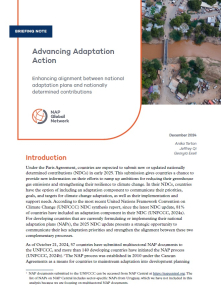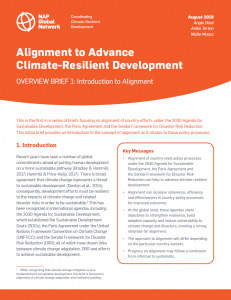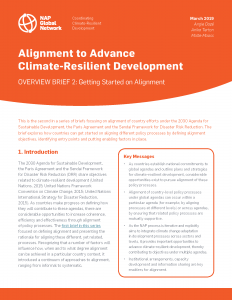A number of global agendas share objectives to strengthen resilience to climate change disasters, creating a strong rational for alignment. Within countries, various policy processes have been established to outline individual commitments and strategies for meeting the objectives therein. These include strategies aimed at achieving the SDGs; National Adaptation Plans (NAPs) and Nationally Determined Contributions (NDCs) under the Paris Agreement; and Disaster Risk Reduction (DRR) strategies under the Sendai Framework. Alignment of these different processes can increase coherence, efficiency and effectiveness towards development outcomes that are resilient and sustainable.

Read our first overview brief on introducing Alignment to Advance Climate-Resilient Development.



